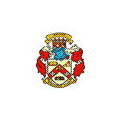Studies & Degrees in Advertising
Choose where you would like to study Advertising:
AndorraArgentinaAustraliaAzerbaijanBelgiumBoliviaBrazilCanadaChileChinaColombiaCosta RicaCyprusCzech RepublicDenmarkDominican RepublicEcuadorFranceGermanyHondurasHong KongHungaryIndiaIrelandItalyLebanonMexicoMoroccoNamibiaNew ZealandNicaraguaPakistanRussiaSingaporeSloveniaSouth KoreaSpainThailandThe United KingdomThe United StatesTurkeyUruguayAdvertising Study Programs
Advertising is a communication process using different forms of media. It is the way through which the vendor introduces and markets products and eventually makes sales. It is a form of mass selling that is used when person-to- person selling is inefficient. The goal of advertising is to make the consumers aware of the products being offered as a need thereby making it inevitably, a profit. The more persuading and striking an advertisement is, the more likely the product will sell to the masses.
Many forms of advertising are now popular in society through modernization although it was believed that early advertising has its beginnings in the first newspapers in the 17th century, and the earliest form of advertising included classified ads which simply contained information about the product being sold and its price until the 19th century. During World War I advertising was used as propaganda by the British who wished to persuade its citizens as well as Americans to fight. That period also increased the creation needs on the consumer that dominated advertising from the 1920’s and so on. During the beginning of the 19th century, pictures, illustrations and graphics with colours were introduced and became a click with the advertising industry. In the 20th century the technology developed, so did the advertising media. Televisions, radios, billboards and public transportations were used to display advertisements from different companies hoping to reach a larger market. From then on, advertising was not only seen in printed media like magazines, but also in visual markets like cinemas and shows. These advertising strategies demanded a bigger budget, but marketers are very much willing to increase their advertising budget if only to get more consumers to buy their products. Advertising now plays a major part in any marketing campaign launched by large as well as small companies.
Advertising is divided into two main categories namely the consumer advertising which is aims for the direct purchaser and trade advertising in which the basis of campaign is made to reach business people through trade journals, articles, portfolios, and other media. Both categories utilize different types and strategies of commercial persuasion. The most common and efficient form of advertising is the institutional or image advertising. This campaign is designed primarily to build prestige, respect and popularity for particular business enterprises. Almost all corporations and business spent largely in their advertising campaigns that usually mention products or services only incidentally. Another popular form of advertising is the cooperative advertising, wherein the manufacturer shares expenses with the retailer for advertising expenses acquired through commercials in local television, radio or printed in newspapers and magazines. In magazines, advertisements are usually found on the same space. The world is filled with advertisements and all are in a competition to bring in the consumers by making their strategies unique and remarkable. By addressing the different groups and cluster of people all over the world, advertising has made a mark in complete globalization.
Job positions for Advertising:
Graphic Designer
Advertising agencies rely mostly on their creative staff and creative department to produce superb products for their clients. These teams are composed of different careers and positions, each contributing to the eventual success of an ad campaign. One of the members in this department is the Graphic Artist. Graphic Artists or Graphic Designers are concerned with all the visuals that are involved in an advertisement. They plan, analyze and produce the needed visual impressions from the client’s input and objectives. They are the artistic producers of the advertisements and they ensure that the message of the product or service is delivered by utilizing the proper colours, animation, photos and illustrations. They develop the layout and design for publications, magazines, newspapers, billboards and other printed media. They are also involved in making logos, brochures, flyers, packaging designs and other signs and signage systems for business and government use. Graphic designers are also involved in television, wherein they are responsible for making short animations in movies or in TV shows. A number of graphic designers also work in web design, where they are most needed for designing web pages, advertisements in web sites and other multimedia projects.
Graphic designers prepare their work by using computer software or by drawing. They carefully select the most preferable choice of colours, images, illustration, and sounds that would best depict the message of the client’s product or service. They are aware of the target market and consumers and are able to create an ad that would impact on these prospective consumers. It is essential to identify the consumers and their needs in order for the graphic designer to come up with a relevant advertisement, and this explains the need of graphic artists to frequently discuss plans and strategies with the client before coming up with a final design. The graphic artist usually suggests a number of designs, from which a client will now choose and plan on the next objectives. Graphic artists must then have presentation skills, much like any other member of the advertising team. They must be able to clearly explain their ideas and approaches in order for the client to relate it to their needs. For Graphic Artists who run their own businesses, they must know how to handle administrative jobs, such as managing and supervising activities of their employees, acquiring new clients, interaction with current clients and selection of new equipment.
A Bachelor’s Degree or an Associate degree in graphic design is usually required for graphic designers to get the job. Most companies also accept those with degrees in Advertising and Fine Arts, or most courses that include visual arts, drawing and design. Entry-level designers are usually trained for 1 to 3 years before they are eligible for higher positions. Experienced Graphic Designers usually land positions like Creative Directors or Creative Managers, while some, prefer to be in the academe to teach their profession.
Advertising Account Manager
Advertising careers are usually grouped in teams and each member has a different contribution. These teams are also called departments, each assigned with a different task to accomplish and each are under the command of different executives. One of the most important departments that serve as the backbone of an advertising agency is the account services department. This department is responsible for acquiring and managing accounts of clients in the advertising agency. The person responsible for this department is the Account Director. The primary role of the Account Director is to supervise the whole advertising process. This includes assisting the client in working and improving the preferred marketing strategy and overseeing the finished ad campaigns. Account directors maintain the connection and coordination of the client with the agency, making certain that the client’s objectives are met and that all the input from the different departments of the agency are balanced. They are well informed of the client’s products or service and the market and consumer’s to which it is directed to, through this, the necessary adjustments and fitting advertising strategies are made. They also understand the marketing objectives of each client regarding sales and competitor products, to make sure that clients have the upper hand in the competition for sales. The Account Director briefs all the departments involved to see to it that the stages of production are accomplished. They assist the client in solving marketing problems and makes sure that the advertisements and campaigns are on time and on budget. Account directors do not only have responsibilities concerning the clients, they also have tasks that keeps the agency running, such as making sure that the account is profitable and is running well, and ensuring that resources are always on hand. They must stay alert for opportunities to grow clients and the agency itself. An Account Director always aims for superior performance from the team as well as superior products for the clients.
As an Account Director, one must be a strategic thinker, resourceful, meticulous for detail and has outstanding communication skills. They must learn how to present marketing strategies and production work in front of groups of clients and they must be convincing enough when they introduce the capabilities of the agency to fulfil their objectives. This career requires a lot of collaboration and cooperation and team leading skills are a preferable to be able to run the whole team in an account. This position requires a business or management degree and usually account directors are offered the position after proving their capability in handling clients. This career is one of the highest paid positions in an advertising agency accompanied by a greater probability for promotions.




